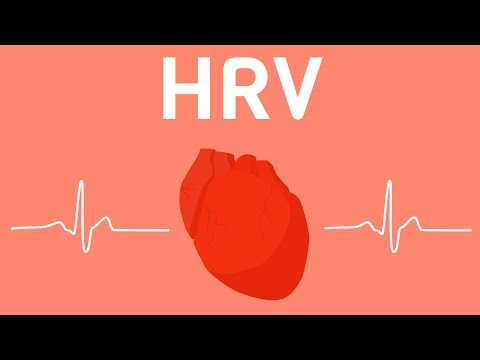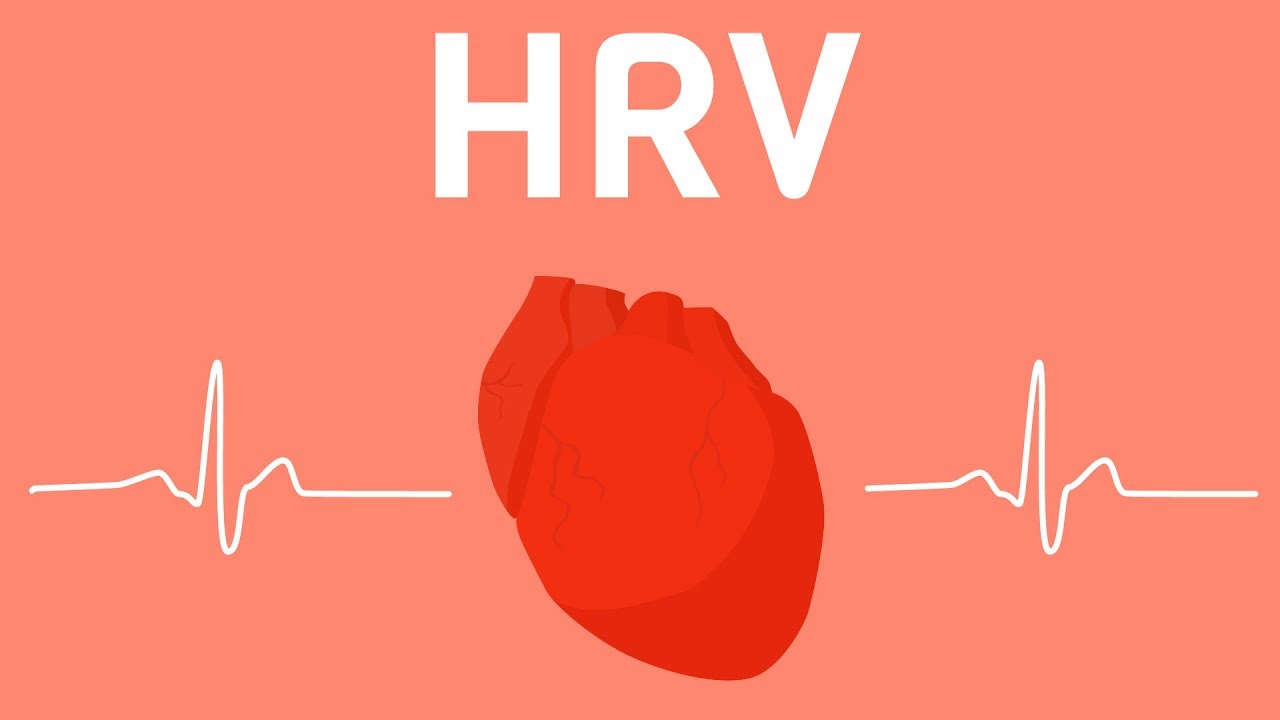Healthy HRV: Unlocking the Secret to Optimal Well-being Discover the fascinating world of Heart Rate Variability (HRV) and how it holds the key to your overall health and wellness. HRV, the variation in time intervals between heartbeats, serves as a powerful indicator of your body’s resilience and ability to adapt to stress. By monitoring and understanding your HRV, you gain invaluable insights into your physiological state, allowing you to make informed decisions to optimize your well-being. With Healthy HRV, you delve into the intricate web of factors that influence your heart’s rhythmic patterns, including physical activity, sleep quality, and stress levels. By embracing a holistic approach, you can tap into the immense potential of HRV to enhance your cardiovascular fitness, improve mental clarity, and augment your body’s ability to recover from physical exertion. Unlock the potential of Healthy HRV to transform your well-being, as you discover the profound implications it has on various facets of your life. Whether you are an athlete seeking to fine-tune performance, an individual striving for stress management, or simply someone aiming for optimal health, understanding and nurturing your HRV can be a game-changer. Embark on a journey towards a healthier, more balanced life by harnessing the power of Healthy HRV. Armed with knowledge and insights, you can make proactive choices to optimize your lifestyle, improve resilience, and achieve a state of harmony between mind and body. Take control of your well-being today and unlock the potential that lies within your heart’s rhythm.

Healthy HRV
| Factors | Description |
|---|---|
| Heart Rate Variability (HRV) | A measure of the variation in time intervals between consecutive heartbeats, indicating the adaptability of the cardiovascular system. |
| High Frequency (HF) Power | Reflects parasympathetic (rest-and-digest) activity, associated with relaxation, recovery, and overall heart health. |
| Low Frequency (LF) Power | Indicates sympathetic (fight-or-flight) activity, involved in stress response and short-term adaptations. |
| LF/HF Ratio | An indicator of autonomic balance, with higher values suggesting sympathetic dominance and lower values indicating parasympathetic dominance. |
| Respiratory Sinus Arrhythmia (RSA) | A natural variation in heart rate synchronized with breathing, demonstrating the interaction between the cardiovascular and respiratory systems. |
| Vagal Tone | Refers to the activity of the vagus nerve, a major component of the parasympathetic nervous system, influencing HRV and overall well-being. |
| Healthy Range | Optimal HRV values are characterized by higher HF power, lower LF/HF ratio, increased RSA, and enhanced vagal tone. |
| Implications | Healthy HRV is associated with improved cardiovascular function, reduced risk of heart disease, better stress management, enhanced cognitive performance, and overall physiological resilience. |
Heart Rate Variability (HRV): Unveiling the Secrets of Your Heart’s Rhythm
Understanding Healthy HRV: A Key to Optimal Health
Heart Rate Variability (HRV) is a crucial metric that can provide valuable insights into our overall health and well-being. It refers to the variation in the time interval between consecutive heartbeats. While a steady and consistent heart rate may seem desirable, a healthy HRV actually reflects a flexible and adaptable autonomic nervous system, which is essential for maintaining optimal health. In this article, we will explore the concept of healthy HRV and its significance in promoting overall wellness.
The Basics: What is HRV?
HRV is the measure of the variation in the time intervals between consecutive heartbeats. It is influenced by the balance between the two branches of the autonomic nervous system – the sympathetic and parasympathetic nervous systems. The sympathetic nervous system triggers the “fight or flight” response, while the parasympathetic nervous system promotes relaxation and recovery. A healthy HRV indicates a harmonious interplay between these two systems.
Factors Affecting HRV
Several factors can influence HRV, including:
1. Age
Age plays a role in determining HRV, as it tends to decrease with advancing age. This decline is believed to be associated with reduced parasympathetic activity and increased sympathetic dominance. However, regular exercise and healthy lifestyle habits can help mitigate this decline, promoting a healthier HRV even in older individuals.
2. Stress Levels
Chronic stress can significantly impact HRV, leading to a decrease in overall heart rate variability. Stress activates the sympathetic nervous system, shifting the balance towards sympathetic dominance. Managing stress through relaxation techniques, meditation, and regular exercise can help restore a healthy HRV.
3. Physical Fitness
Regular physical activity and exercise have a positive impact on HRV. Engaging in aerobic exercises, such as running or cycling, can enhance parasympathetic activity, leading to an increase in HRV. Additionally, a higher level of fitness is often associated with a healthier HRV.
4. Sleep Quality
Quality sleep is vital for maintaining a healthy HRV. Sleep disturbances, such as sleep apnea or insomnia, can disrupt the normal autonomic balance, leading to a decrease in HRV. Practicing good sleep hygiene and addressing any sleep-related issues can contribute to a healthier HRV.
5. Lifestyle Factors
Various lifestyle factors, such as smoking, excessive alcohol consumption, and poor diet, can negatively impact HRV. These behaviors can lead to increased sympathetic activity and inflammation, resulting in a decreased HRV. Adopting a healthy lifestyle that includes a well-balanced diet, moderation in alcohol consumption, and avoiding smoking can contribute to a healthier HRV.
The Significance of a Healthy HRV
A healthy HRV is associated with several positive health outcomes:
1. Cardiovascular Health
A higher HRV is often indicative of better cardiovascular health. It is associated with a lower risk of heart disease, including conditions such as coronary artery disease and hypertension. A healthy HRV reflects a well-functioning autonomic nervous system, promoting overall heart health.
2. Stress Resilience
A higher HRV suggests better stress resilience. It indicates an individual’s ability to adapt and recover from stressful situations, reducing the risk of chronic stress-related health issues. A healthy HRV enables individuals to effectively respond to stress and maintain emotional well-being.
3. Fitness and Performance
Regular exercise and higher physical fitness levels are associated with a healthier HRV. An increased HRV is often observed in athletes and individuals who engage in regular physical activity. A healthy HRV reflects the cardiovascular system’s ability to efficiently respond to exercise demands, enhancing overall fitness and performance.
4. Mental Health
Studies have found a link between a healthy HRV and better mental health outcomes. A higher HRV is associated with reduced symptoms of anxiety and depression. It indicates a better ability to regulate emotions, promoting overall mental well-being.
5. Longevity
Research suggests that individuals with a healthier HRV have a higher likelihood of living longer. A well-functioning autonomic nervous system, reflected by a healthy HRV, is associated with a reduced risk of mortality and overall longevity.
Monitoring and Improving HRV
Monitoring HRV can provide valuable insights into our overall health and well-being. Various wearable devices and smartphone applications are available that can track HRV. By understanding the factors that influence HRV, we can take steps to improve it:
1. Stress Management
Engaging in stress-management techniques, such as meditation, deep breathing exercises, and regular relaxation practices, can help restore a healthy HRV by reducing sympathetic dominance and promoting parasympathetic activity.
2. Regular Exercise
Engaging in regular aerobic exercises, such as brisk walking, jogging, or swimming, can increase HRV. Aim for at least 150 minutes of moderate-intensity aerobic activity per week to promote a healthier HRV.
3. Prioritize Sleep
Ensure you are getting enough quality sleep each night. Establish a consistent sleep schedule, create a relaxing sleep environment, and address any underlying sleep issues to support a healthy HRV.
4. Healthy Lifestyle Habits
Avoid smoking, limit alcohol consumption, and maintain a balanced diet to promote a healthier HRV. These lifestyle changes can help reduce inflammation and improve autonomic balance.
5. Seek Professional Guidance
If you have concerns about your HRV or want to optimize your overall health, consult with a healthcare professional or a specialist in heart rate variability. They can provide personalized recommendations based on your unique circumstances.
In conclusion, a healthy HRV reflects a flexible and adaptable autonomic nervous system. By understanding the factors influencing HRV and implementing lifestyle modifications, we can promote a healthier HRV, supporting optimal health and well-being.
What is a Healthy HRV?
Frequently Asked Questions
What is a healthy HRV?
How can I improve my HRV?
1. Practice deep breathing and relaxation techniques: Deep breathing exercises, meditation, and mindfulness practices can help activate the parasympathetic nervous system, leading to improved HRV.
2. Engage in regular exercise: Cardiovascular exercises, such as running, swimming, or cycling, can enhance HRV. Aim for at least 150 minutes of moderate-intensity exercise per week.
3. Prioritize sleep: Getting adequate sleep is crucial for HRV. Aim for 7-9 hours of quality sleep each night.
4. Manage stress: Chronic stress can negatively impact HRV. Incorporate stress management techniques like yoga, tai chi, or journaling into your routine.
5. Maintain a healthy lifestyle: A balanced diet, limited alcohol consumption, and avoiding smoking contribute to better HRV.
It’s important to note that individual variability exists, and it’s best to consult with a healthcare professional for personalized advice on improving your HRV.
What factors can decrease HRV?
1. Chronic stress: Prolonged exposure to stressors can disrupt the balance between the sympathetic and parasympathetic nervous systems, leading to reduced HRV.
2. Sedentary lifestyle: Lack of physical activity and prolonged sitting can negatively impact HRV. Regular exercise is essential for maintaining healthy HRV.
3. Poor sleep quality: Insufficient or poor-quality sleep can contribute to decreased HRV. It’s important to prioritize sleep hygiene and establish a consistent sleep routine.
4. Unhealthy lifestyle habits: Factors like excessive alcohol consumption, smoking, and a poor diet can lower HRV. Maintaining a healthy lifestyle is crucial for optimal HRV.
5. Certain medical conditions: Conditions such as heart disease, diabetes, obesity, and hypertension can affect HRV. It’s important to manage these conditions and follow medical advice to improve HRV.

